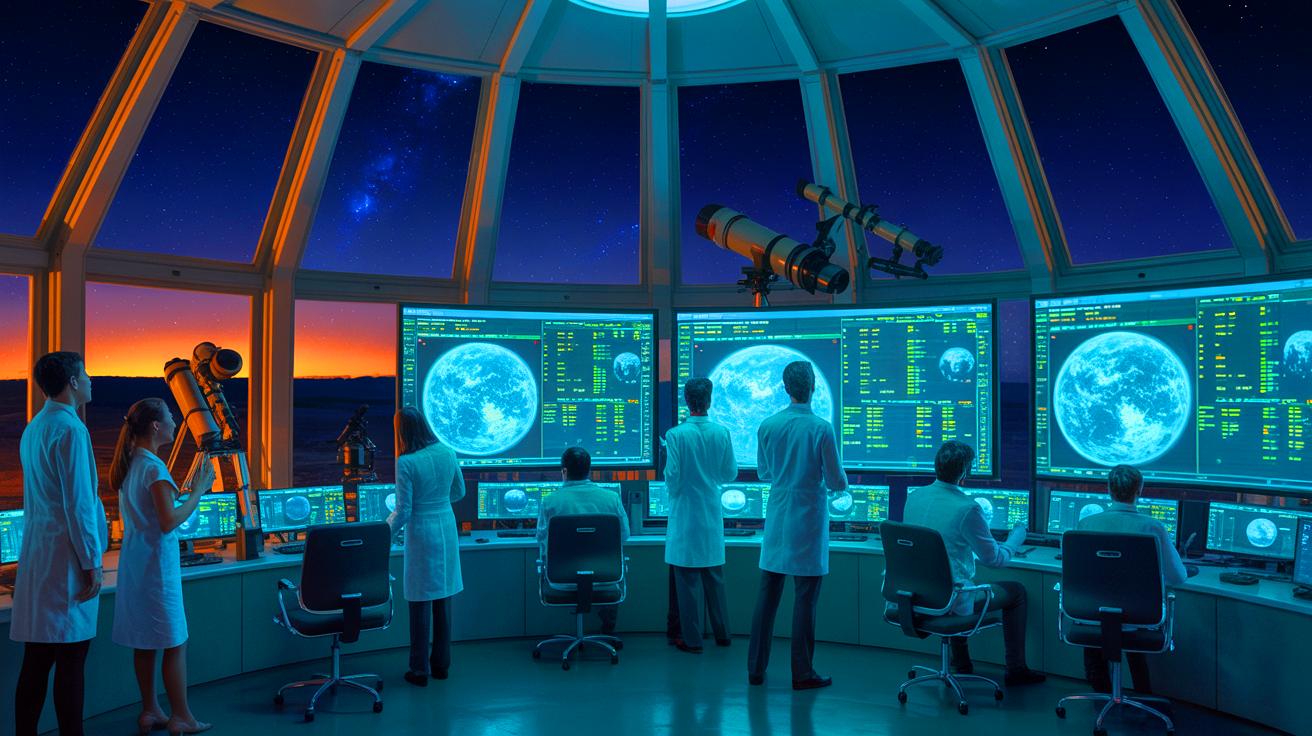IN A NUTSHELL
🌍 Researchers led by physicist Carrie Nugent explore the likelihood of a catastrophic asteroid impact on Earth.
🛰 NASA’s 2022 mission demonstrated potential planetary defense by altering an asteroid’s trajectory.
🚗 The study reveals that while asteroid impacts are rare, they are more likely than rabies but less likely than car accidents.
📊 By comparing various risks, researchers emphasize the importance of prioritizing preventable dangers in safety initiatives.
As we ponder the cosmos and our place within it, questions about our mortality occasionally surface. One such question is how likely we are to face death by an asteroid impact. A team led by physicist Carrie Nugent from the Olin College of Engineering in the United States has embarked on a mission to quantify this risk. Their study not only examines the likelihood of an asteroid striking Earth during an average human lifespan but also compares this threat to other rare and preventable causes of death. The results reveal surprising insights, including the fact that death by asteroid is more probable than death by rabies, yet far less likely than car accidents.
Understanding the Risks
In the realm of cosmic threats, an asteroid impact is a scenario that has captured human imagination for decades. However, how real is the danger? According to Nugent’s research, while the possibility of an asteroid striking Earth is not negligible, the likelihood remains low. The study places this risk in context by comparing it with other causes of death that are often preventable. For instance, while rabies is a fatal disease, its occurrence is exceedingly rare, especially in developed countries where vaccination programs are prevalent.
Interestingly, the study highlights that death by car accident is far more common than both asteroid impacts and rabies. This comparison serves to provide perspective, reminding us that while extraterrestrial threats exist, everyday risks like car accidents demand our immediate attention and preventative measures. By understanding these risks, we can better allocate resources and efforts toward minimizing preventable deaths.
Preventing Asteroid Impacts
Efforts to prevent asteroid impacts have made significant strides in recent years. NASA’s 2022 mission to deliberately crash a spacecraft into an asteroid marked a milestone in planetary defense. The mission aimed to alter the asteroid’s trajectory, demonstrating the potential to prevent a future impact. The success exceeded expectations, showcasing a noteworthy change in the asteroid’s orbit.
Despite the high costs and intricate planning involved in such missions, they highlight the potential for human intervention in averting cosmic disasters. Nugent’s team emphasizes that placing asteroid risk in context with other risks allows scientists to weigh the costs and benefits of such endeavors. This comparison is crucial for determining whether the investment in planetary defense outweighs the costs of other safety initiatives, such as improving car safety features or expanding rabies vaccination programs.
Calculating the Odds
To assess the likelihood of an asteroid impact, Nugent and her colleagues analyzed data on near-Earth objects, using models and previous risk assessments for asteroids larger than 460 feet. They then compared these findings with data on various causes of death to determine the probability of each event during an average global human lifespan of 71 years.
The comparison extended to nine other potentially fatal events, including lightning strikes, elephant attacks, and influenza illnesses. The analysis revealed that while some events, like dry sand hole collapses, are almost always fatal, their occurrence is exceedingly rare. Conversely, common illnesses like influenza are far more likely to occur, albeit with a lower fatality rate. This approach provides a comprehensive view of how asteroid risks measure up against other dangers we face in our daily lives.
The Broader Implications
While the study provides valuable insights, translating these risk assessments into real-world applications requires careful consideration. The rarity of asteroid impacts contrasts sharply with the ongoing threat posed by more mundane yet common risks. For example, dry sand hole collapses claim more than three lives annually, predominantly affecting young children. This statistic underscores the importance of context in assessing risks.
Ultimately, the question remains whether Earth is overdue for another asteroid impact. As we reflect on these findings, it prompts us to consider the balance between caution and unnecessary worry. Does this knowledge offer comfort or fuel further anxiety? While the answers may not be clear-cut, the study encourages us to remain vigilant and informed, assessing risks pragmatically rather than through fear-driven assumptions.
As we contemplate the potential dangers of asteroid impacts, it is essential to remain informed and proactive. While the likelihood of such an event remains low, understanding the broader context of risks we face allows for better decision-making. How can we balance our focus on cosmic threats with the everyday dangers that are more immediate and preventable?
This article is based on verified sources and supported by editorial technologies.
Did you like it? 4.5/5 (27)

